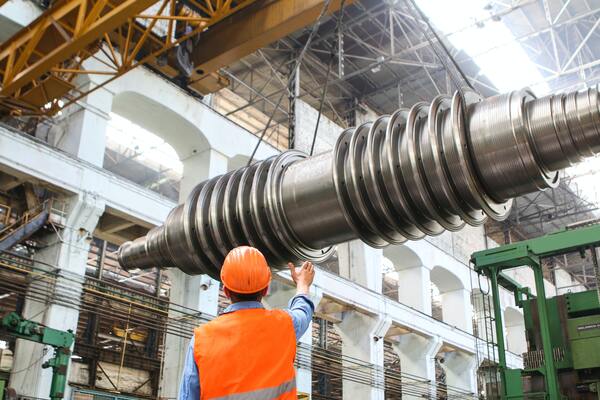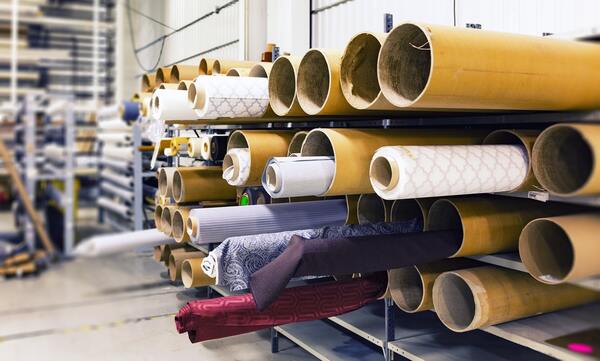By: Jayvee R
2023/12/05
You may have heard of the term fixed assets before but have you really known and deciphered what it means?
Fixed assets are long-term assets that are tangible and often used for more than a year of its useful life for business operations to produce certain goods and services.
These assets are valuable to the company since it brings financial benefits and growth.
However, as time passes, it incurs depreciation and oftentimes computed with depreciation value during tax filing.
Fixed assets are also referred to as Property, Plant or Equipment and appear as PP&E on the balance sheet.
Understanding assets is important in evaluating a company’s balance sheet and in assessing the financial health of a company.
To provide a better understanding of fixed assets, here are some examples:
Examples of Fixed Assets:
- Land
- Buildings and Facilities
- Machinery
- Vehicles (company cars, trucks, forklifts)
- Furnitures
- Computer Equipment
- Tools
This is just a list to serve as a guide but this does not apply to all companies.
Some companies have different classification of their fixed assets.
One fixed asset of one company may not necessarily be the same with the other.
For instance, in a courier company, motorcycles are assets since it is the prime mover of operations.
A company selling motorcycles for example, considers motorcycles as inventory and not fixed assets.
The nature of the industry would vary and so is the way they tag their fixed assets. However, they have the same characteristics.
Characteristics of Fixed Assets
USEFUL LIFE
– Fixed assets are found in the balance sheet as PP&E or property, plant and equipment. They do not appear in the income and expense statement as expense but as an asset. These assets are non-current assets that have a useful life of more than one year.
DEPRECIATION
– Other assets can be depreciated showing its wear and tear through its constant use, except for land which normally appreciates in value through the years.
FINANCIAL BENEFITS
– Although fixed assets have depreciation, they provide and produce goods and services and they are part of the operations, thus helping generate income and revenue leading to financial gain.
NON-CURRENT ASSETS
– Fixed assets are non-current assets, they are long -term and part of the company’s balance sheet and not appearing as expense in the income and expense report. Fixed assets have value but are not converted to cash value. Current assets are the ones that can be converted to cash within a period of one year.
Having these assets adds value to the company and is critical to its asset turnover ratio in order to determine the efficiency of fixed assets in revenue generation.
Companies that make the most of their fixed assets have an advantage over their competitors since it has certain implications on a business’ financial statement.
With this, the accounting equation that make up the balance sheet showing fixed assets is shown below:
Assets = Liabilities + Equity
In a restaurant to operate effectively, for instance, there are several fixed assets required to operate an efficient business.
The restaurant would need chairs, tables, refrigerators, ventilation, microwave, air conditioning units, sound system, camera and security system and many more to serve food and provide good service to customers.
All these including coffee machines, water dispensers and more are fixed assets that are utilized to help the business thrive and grow.
For many years, the company will be using these fixed assets and as such, listed as fixed assets in the balance sheet.
How do fixed assets work?
In the area of accounting, understanding fixed assets and its relevance to the business is fairly simple.
Restaurateurs need ovens, tablet top stoves, refrigerators, tables and chairs to operate effectively, basically the same as farmers needing trucks, tractors and generator sets.
Regardless of the size of the company, all businesses require fixed assets to operate in the form of property, plant and equipment (PP&E).
In the income and expense statement, most often, fixed assets are not recorded as expense.
It appears in the balance sheet and accounting just computes its depreciation over the period of its useful life.
Fixed assets can also be considered as capital assets and can be part of the documentations required for approval of loan.
Instead of listing it as expense in the income and expense, it is listed as fixed asset for capitalization purposes.
Do you want to come up with clear and dynamic reports, reliable financial statements and earnings reports?
Stop recording income and expense reports manually.
Save some time and stay away from stress accounting.
EasyFS is cloud-based and delivers highly accurate reports as you require.
EasyFS can provide a turn-key solution to your most common needs, especially working on depreciation on fixed assets.
Most of all, EasyFS is CAS (Computerized Accounting System) compliant ready for government taxation in the Philippines.
EasyFS provides a fast, accurate and real-time view of your balance sheets and financial statements.
The businesses served by EasyFS are varied namely:
- Healthcare Industries such as Pharmacies, Clinics, Hospitals that monitor their sales and inventories
- Dry Goods Groceries, Convenience Stores, Construction Supplies and Hardware Stores
- Bookshops, Boutiques, Specialty Stores like Bike and Hobby Shoppes
- Computer Hardware, Cellphones and Gadgets Stores
- Agriculture Shops / Agrivet Supplies
- Service Industries like BPO (Business Process Outsourcing) using only Sales and Accounting Feature of EasyFS
- Transportation Industry (Car Dealership, Motorcycle Dealership)
- Food Business, Restaurants and Hotels
Learn more about EasyFS with the following features and benefits:
- End to End Accounting Software with Sales and Inventory Integration.
- Cloud-based and Software as a Service (SAAS).
- Multi-currency. The system is capable of making transactions in different currencies.
- Multi-language.
- Higher Accuracy and real-time reports.
- Faster Coordination with Teams.
- Cost effectiveness by reducing paper and Ink wastages.
- Low cost of deployment and maintenance.
- Improve customer service.
- Philippine Taxation Law Ready. EasyFS follows the Regulations and Guidelines set by the Bureau of Internal Revenue (BIR).
- Compatible with POS front-end Software.
- Multi-Branch. The system is capable of having multiple Stores, Branches & Warehouses to monitor Sales and Inventory across your company.
For inquiries, call us now at +63-32-256-2904 or +639088601619 or leave us a message here.













